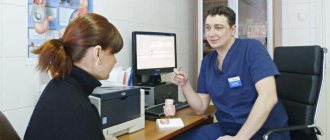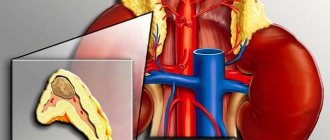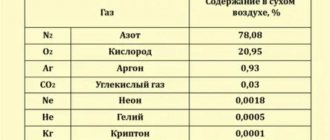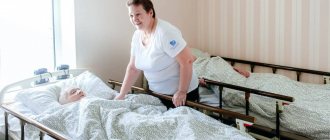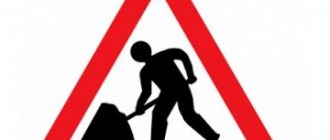Installing an implant is a surgical operation, so there may be side effects after it. In particular, many patients experience an increase in temperature after dental implantation, which under certain conditions should not be alarming. In this way, the body reacts to the intervention and tries to mobilize forces to fight a possible infection. But this symptom can also indicate the onset of a complication, so you need to take it seriously.
Features of the procedure
Tooth extraction is not performed without indications. We perform treatment either planned or emergency. In both cases, a preliminary diagnosis is carried out.
The reason for the procedure may be:
- periodontitis or periodontitis;
- root canal trauma;
- planned orthopedic treatment;
- complex tooth crown injury;
- developmental anomalies;
- neoplasms in the tooth area.
Extraction can be carried out in a simple way, when the crown is simply separated from the gum tissue and the entire tooth is removed, or in a complex way, in which the dentist dissects the gum or periosteum.
Characteristic symptoms
The tumor grows inside the skull and begins to compress the brain. As a result, not only those departments that are in close proximity to the outbreak suffer, but also those that are located at a distance. The larger the tumor, the higher the intracranial pressure, and the higher the likelihood of cerebral edema. All this leads to a number of symptoms:
- headache;
- nausea and vomiting;
- blurred vision;
- decrease in the functions of the nervous system, which gradually leads to loss of coordination of movement, deafness, deterioration in the functioning of taste and olfactory receptors;
- numbness of the face;
- paresis of facial muscles;
- problems with swallowing;
- abnormal movement of the eyeballs;
- paralysis;
- speech problems;
- mental and intellectual disorders;
- visual and auditory hallucinations;
- epilepsy;
- convulsions;
- hormonal disorders.
Temperature as a sign of pathology
Immediately after a tooth is extracted, the open socket is in no way protected from infection. If the removal was simple, then after a few hours a film forms, blocking the path of pathogenic microorganisms. With complex extraction, the wound turns out to be too open and deep, so it takes much more time for the formation of natural protection. The overall healing period takes from 3 days to 2 weeks.
Extraction (removal) of a tooth in a person causes stress for the body on a psychological and physiological level. An increase in body temperature is a peculiar manifestation of the reaction to the procedure. Additional local symptoms are bleeding from the socket, swelling and redness of the gums. The patient's general health may also deteriorate, accompanied by weakness, dizziness, and sometimes nausea.
Many patients begin to worry whether there may be a fever after tooth extraction, because everyone knows that an increase in body temperature is a sign of an inflammatory process. However, dentists claim that this sign is just an indicator of tissue healing and stress suffered by the body. But only if there are no other symptoms of an unnatural process, the temperature does not rise above 37.5 °C and lasts no more than 3 days.
Surgical trauma is stress for the body
Any surgical intervention, even the most minimally invasive, is to a certain extent stress for the entire human biological system. And in this case we are not talking about an operation through small punctures, here soft tissue structures are dissected for a long time (length from 10 to 20 cm) and deeply, followed by their moving apart, opening the deformed bone joint. Moreover, the “native” joint is cut off from the articular bones, and a fragment of the femoral neck is captured.
Suture after surgery.
Next comes the immediate preparation of the bones for further implantation, namely:
- perforation of the femur to create a channel that is optimal in width, depth, and angle of inclination in order to insert the leg of a hip joint prosthesis into it;
- removing the top layer of the acetabulum, grinding and grinding this part of the pelvic bone;
- formation of anchor holes in the walls of the prepared acetabulum using a special medical drill.
The next stage of surgery is immersion into the bone and fixation of, in fact, the most artificial analogue of the joint. For these purposes, the technique of dense driving, the method of cement planting or combined fixation is used. After checking the functionality of the hip joint endoprosthesis, internal disinfection is carried out, drainage tubes are installed and the wound is sutured.
Intraoperative manipulations cause injury to both anatomical structures and the entire body in general. Due to operational aggression, the following arises:
- reactive inflammation of areas within the surgical field;
- excessive loss of water in the body due to the release of wound effusion;
- decreased movement of biological fluid in the bloodstream;
- absorption into the blood of decay products, which are always formed when tissue is damaged.
Thus, increased local and general temperature after hip or knee replacement is a completely adequate reaction of the body to sudden structural changes . Temperature deviations in the early postoperative stage towards an increase are regarded not as a pathology, but as a result of increased work of the immune system, which is normal from a physiological point of view. Immune mechanisms are activated to regulate disrupted vital processes, protect injured tissues from the potential danger of infection, and initiate active regeneration mechanisms. Note that there may not be any febrile symptoms immediately after surgery; it all depends on the individual characteristics of a particular organism.
An increase in temperature to 37.5 degrees immediately on the first or second day after arthroplasty is considered normal. The temperature persists (37-37.5 degrees) or “jumps” from normal to subfebrile values with positive recovery during the first week, usually up to 3-5 days. Maximum it can bother you for 10 days.
The main cause of low-grade fever in the early stages is inflammation of the wound. As soon as the incision is completely healed and the stitches are removed, which happens after about 1.5 weeks, thermoregulation should finally return to normal.
What a high temperature may indicate
Dentists note that the temperature mainly increases after the removal of wisdom teeth, impacted units, or with a concomitant inflammatory process.
When a patient has a temperature of 38 °C or more for several days after wisdom tooth removal, the reason may be the development of:
- granulomas (nodular formations) - pathological formations form on the remains of roots that the doctor did not remove at the extraction stage;
- alveolitis (inflammation of the socket) - the provoking factor is violation of the dentist’s recommendations for wound care, perforation of the walls during surgery, weak immunity or inflammation of the throat;
- osteomyelitis - a process of purulent-necrotic damage to the jaw bone, with a high probability of abscess and gangrene;
- hematomas - occur when blood vessels are damaged during extraction and can provoke a purulent process and the formation of a cyst;
- infections - lack of proper care and antiseptic treatment will lead to rapid penetration of infection into the hole and the development of a pathological process.
After tooth extraction, the temperature may rise due to concomitant sinusitis. It is possible that the dentist may make mistakes, which, in addition to damaging the walls of the socket, may involve leaving foreign bodies (for example, a cotton swab) in the open wound or insufficient treatment of the socket.
Diet after surgery for peptic ulcer
In the postoperative period, you need to follow a very strict diet. If the operation was not severe and without complications, then from the second day you can drink water - 0.5 cups per day with teaspoons. From the third day you can drink 0.5 liters, in addition to water, strong tea and broth are added. From the fourth day you can drink 4 glasses a day, which must be divided into 8-12 doses. As food you can eat jelly, raw eggs, yogurt, slimy soups, sour cream.
From the fifth day, depending on the patient’s condition, you can consume liquid food in unlimited quantities. Grinded soups, cottage cheese, semolina porridge are allowed. From the seventh day you can include well-ground boiled meat in your diet. From approximately the 9th day, the patient switches to diet No. 1a, that is, the anti-ulcer table, with the exception of dishes that are prepared with whole milk. Meals should be fractional - 7 times a day in very small portions.
When to see a doctor
After wisdom tooth removal, a temperature of 37 °C without accompanying signs of inflammation is considered normal. There is no need to worry about such indicators. The temperature returns to normal within three days. No action needs to be taken.
You should consult a doctor if, after tooth extraction:
- the temperature lasts for 4 days or more;
- body temperature 38 °C or more;
- the pain does not decrease, but becomes more intense;
- there is severe swelling;
- after 2 days the wound bleeds;
- pus is released from the hole.
You can take medications on your own to lower your temperature if the reading is above 38°C. Touching the wound, trying to clean it, or using any traditional methods is not recommended. If you suspect complications after tooth extraction, you should visit your dentist.
Precautionary measures
In order to prevent them from the first days, they begin to use the necessary preventive measures, namely:
- prescribing or intramuscular administration of an antibiotic with a broad spectrum of antibacterial action;
- carrying out anti-inflammatory physiotherapeutic procedures that relieve swelling and pain, as well as improve tissue trophism, damage healing, lymphatic drainage and blood circulation;
- inclusion of a complex of early therapeutic and restorative physical education, where an important role is given to breathing exercises aimed at eliminating pulmonary hypoventilation;
- the use of blood thinners to prevent the formation of blood clots in the vessels of the legs.
But control over thermoregulation should be carried out even after discharge from the clinic, thanks to which the source of poor health can be diagnosed in time. Thereby preventing the progression of unsafe complications, which may serve as a motive for repeat (revision) surgery. For example, in case of advanced infection, revision prosthetics means removal of an artificial joint, while a new endoprosthesis cannot always be installed immediately. Such harsh prospects will not please anyone, that’s for sure. Therefore, it is easier to be alert and promptly alert the doctor about emerging problems than to undergo difficult drug and surgical treatment in the near future (within the first year).
It is important to warn that not only the complex temperature, but also the local one should be alarming. Monitor the condition of the skin around the wound! If it becomes hot and swollen to the touch, you feel pain when touched or at rest, you notice serous discharge from the surgical wound - all these symptoms should cause alarm and serve as an absolute reason for an immediate medical examination.
Specialist help
In a situation where after tooth extraction the temperature remains at 38 °C, it is dentists who provide assistance. You should not waste time visiting a therapist or other specialist. It is advisable to contact the same doctor who performed the operation.
Treatment necessarily begins with diagnostics, which includes examination and x-rays. Once the cause of the patient’s pathological condition is identified, methods for eliminating it are determined.
Treatment methods depend on the factor that provoked the increase in temperature:
- incomplete removal of the tooth root, formation of a cyst or granuloma - cleaning the hole, treating with an antiseptic, prescribing antibiotics;
- damage to soft tissues - cleansing (in case of a purulent process), treatment with an antiseptic solution, suturing and prescribing antibiotic drugs;
- infection of the socket - high-quality cleaning of the socket, installation of drainage, treatment of the wound with an antiseptic, prescription of a course of antibiotics, removal of the drainage, repeated antiseptic treatment;
- osteomyelitis - opening of the gums, cleansing the bone from nicrotic tissue, applying a medicinal application, antiseptic treatment, taking antibiotics, re-diagnosis, removing the application and suturing.
After treatment, body temperature may also rise within normal limits. Rehabilitation will be more difficult and longer.
Dentists advise monitoring body temperature after tooth extraction, especially if it is a complex operation. To reduce the risk of complications, you should strictly follow all doctor's recommendations. If pathological symptoms appear, there is no need to ignore them. Even a preventive visit to the dentist can prevent serious consequences.
Conclusions and recommendations
Inflated thermometry results should definitely not be ignored. And if in the first 10 days we can talk about them as a normal reaction on the part of the body, which has received stress from undergoing complex surgery on the musculoskeletal system, then in the following days they are regarded as a clear deviation.
- The temperature from the 1st day to the 10th day inclusive should not exceed 37.5 (if higher - a signal for action), at the end of the ten-day period it should completely stabilize.
- An early temperature reaction within established limits, as a rule, has nothing to do with infection; it can be safely called a typical inflammatory response of non-infectious origin. There is no reason to worry.
- If thermometric indicators have not returned to normal within 4 weeks, you need to urgently take action, first of all, contact your attending surgeon.
- Weeks and months after the operation, the thermometer showed more than 37°, 38°? Contact a specialist urgently! Abnormal numbers are already associated with infectious-inflammatory pathogenesis.
The patient’s own well-being depends on the patient’s responsibility and vigilance. To avoid encountering difficulties of this kind, you should:
- adhere to all medical recommendations;
- Impeccably follow the individual rehabilitation program;
- engage in physical activity within strictly permitted limits;
- carry out prevention of all chronic pathologies;
- strengthen immunity;
- treat acute diseases in a timely manner;
- undergo mandatory scheduled examinations;
- be under the supervision of a rehabilitation specialist, orthopedic surgeon, and exercise therapy instructor during rehabilitation;
- If you feel unwell, contact your doctor the same day.
